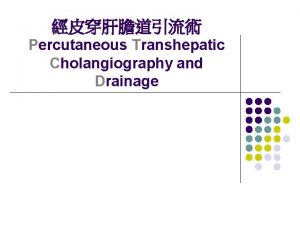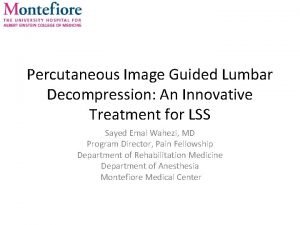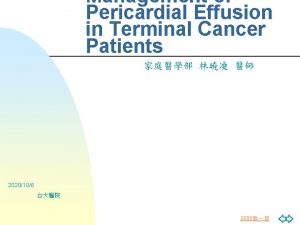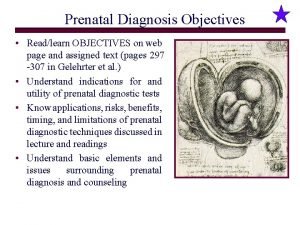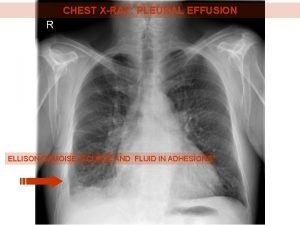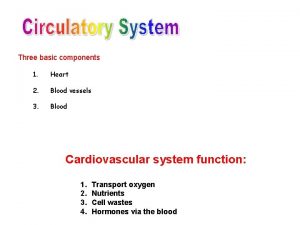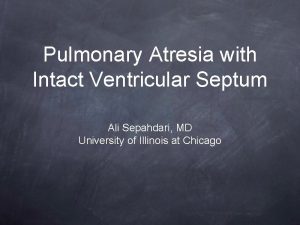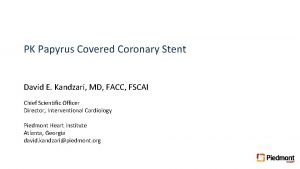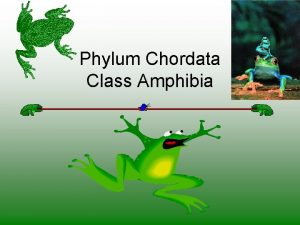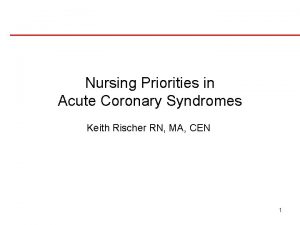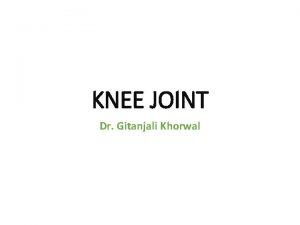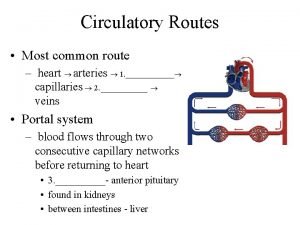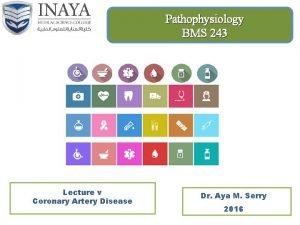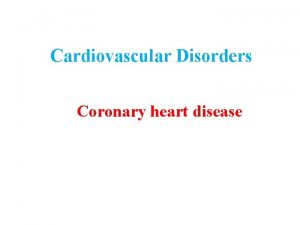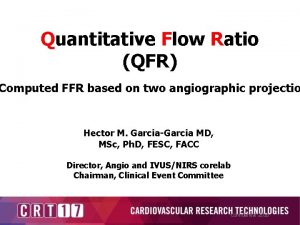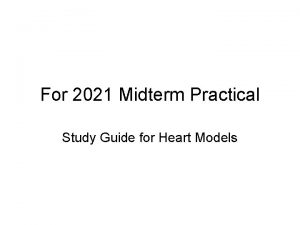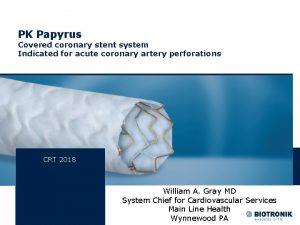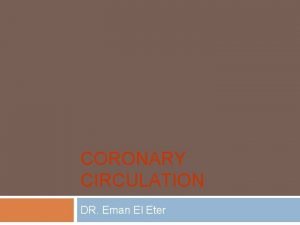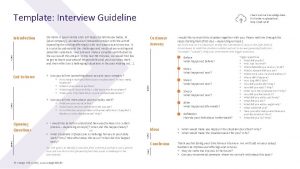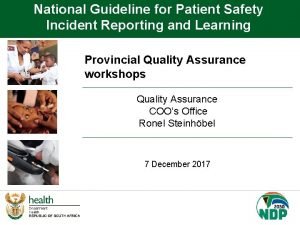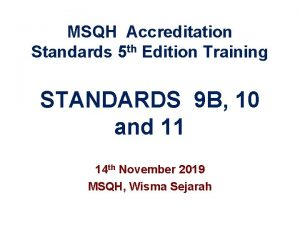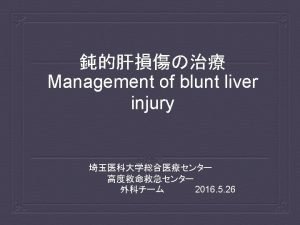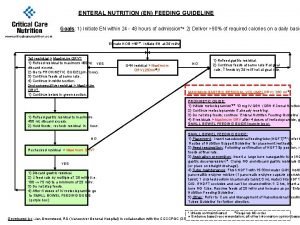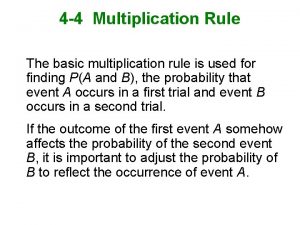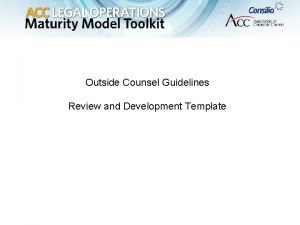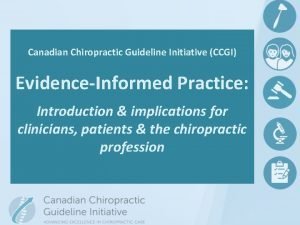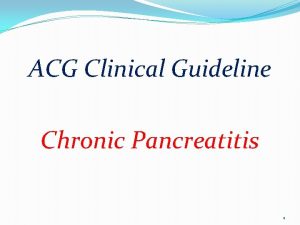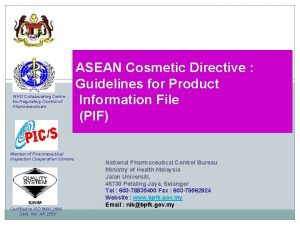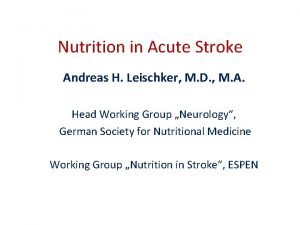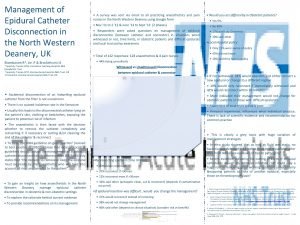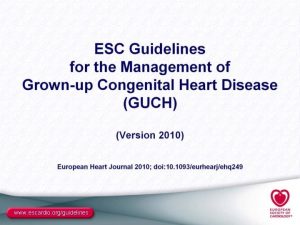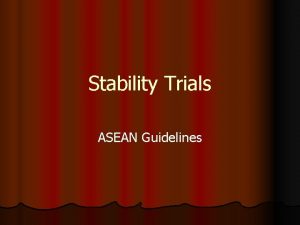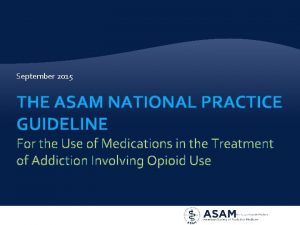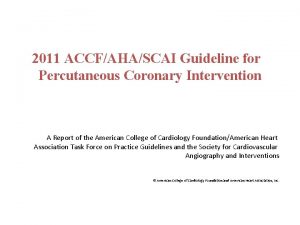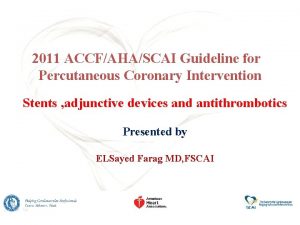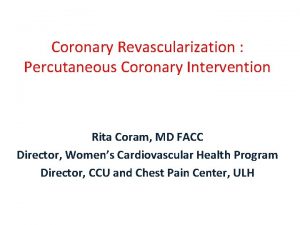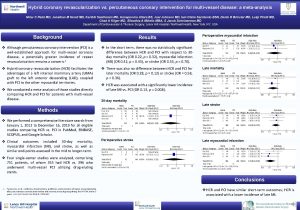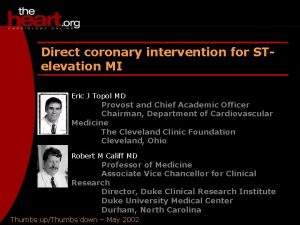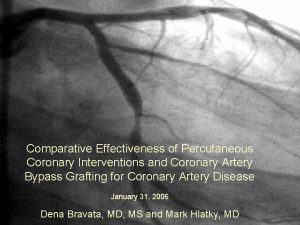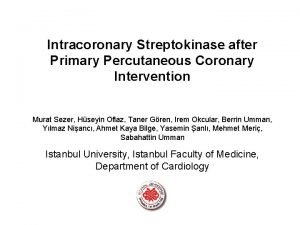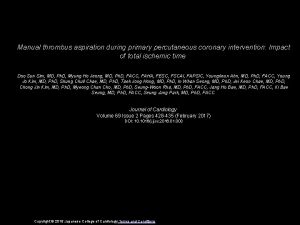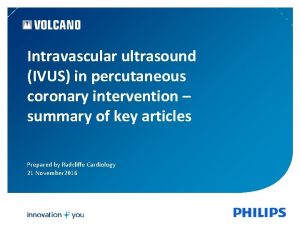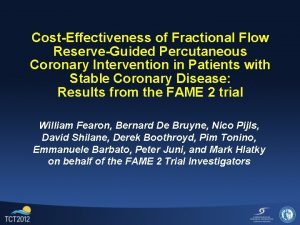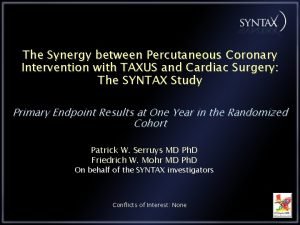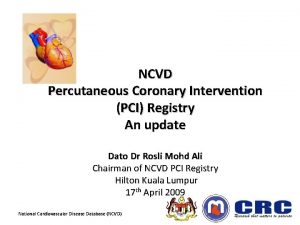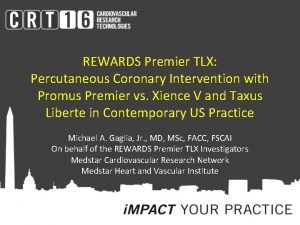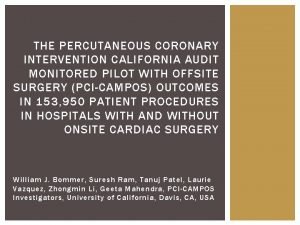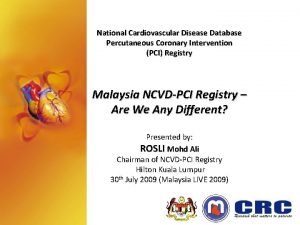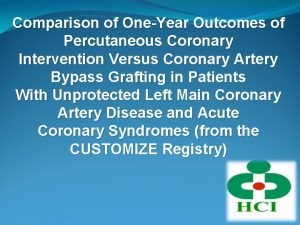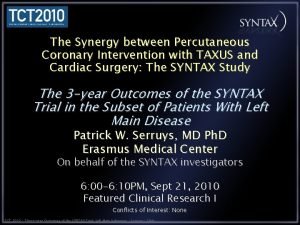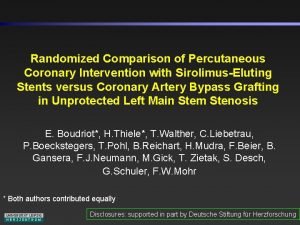2011 ACCFAHASCAI Guideline for Percutaneous Coronary Intervention and





































































- Slides: 69

2011 ACCF/AHA/SCAI Guideline for Percutaneous Coronary Intervention (and Coronary Revascularization) GNL 2011

GNL 2011

Slide Set Organization • COR and LOE • General Revascularization (CABG or PCI) Recommendations • PCI Revascularization Recommendations • Pre-Procedural Considerations • Post-Procedural Considerations • Quality and Performance Considerations GNL 2011

2011 ACCF/AHA/SCAI Guideline for Percutaneous Coronary Intervention Class of Recommendation (COR) and Level of Evidence (LOE) GNL 2011

GNL 2011

Class of Recommendation (COR) COR Benefit/Risk Key Words (The procedure or treatment…) Class I Benefit >>>Risk • Should be performed/administered • Is recommended • Is indicated • Is useful/effective/beneficial Class IIa Benefit>>Risk • Is reasonable • Can be useful/effective/beneficial • Is probably recommended or indicated Class IIb Benefit ≥Risk • May/might be considered or be reasonable • Usefulness/effectiveness is unknown/unclear/uncertain or not well established Class III – No Benefit • Not helpful • No proven benefit • Is not recommended/indicated • Should not be performed/administered • Is not useful/beneficial/effective Class III – Harm • Harmful • Excess cost without benefit or harmful • Potentially harmful • Causes harm • Should not be performed/administered GNL 2011

Comparative Effectiveness Class of Recommendation (COR) COR Key Phrasing Class I • Treatment/strategy A is recommended/indicated in preference to treatment B • Treatment A should be chosen over treatment B Class IIa • Treatment/strategy A is probably recommended/indicated in preference to treatment B • It is reasonable to choose treatment A over treatment B GNL 2011

Level of Evidence (LOE) LOE A B C Criteria • Multiple populations evaluated • Data derived from multiple randomized clinical trials or meta-analyses • Limited populations evaluated • Data derived from a single randomized trial or nonrandomized studies • Very limited populations evaluated • Only consensus opinion of experts, case studies, or standard of care GNL 2011

2011 ACCF/AHA/SCAI Guideline for Percutaneous Coronary Intervention Revascularization Recommendations GNL 2011

Heart Team Approach to UPLM or Complex CAD Anatomic Setting COR LOE UPLM or Complex CAD I – Heart Team Approach C UPLM or Complex CAD IIa – Calculation of the STS and SYNTAX scores B GNL 2011

UPLM Revascularization to Improve Survival Revasc Method CABG PCI COR LOE I IIa For SIHD when both of the following are present: Anatomic conditions associated with a low risk of PCI procedural complications and a high likelihood of good long-term outcome (e. g. , a low SYNTAX score of ≤ 22, ostial or trunk left main CAD) Clinical characteristics that predict a significantly increased risk of adverse surgical outcomes (e. g. , STS-predicted risk of operative mortality ≥ 5%) IIa For UA/NSTEMI if not a CABG candidate IIa For STEMI when distal coronary flow is <TIMI grade 3 and PCI can be performed more rapidly and safely than CABG IIb For SIHD when both of the following are present: Anatomic conditions associated with a low to intermediate risk of PCI procedural complications and an intermediate to high likelihood of good long-term outcome (e. g. , low-intermediate SYNTAX score of <33, bifurcation left main CAD) Clinical characteristics that predict an increased risk of adverse surgical outcomes (e. g. , moderate-severe COPD, disability from prior stroke, or prior cardiac surgery; STS-predicted operative mortality >2%) B B III: Harm For SIHD in patients (versus performing CABG) with unfavorable anatomy for PCI and who are good candidates for CABG B B C B GNL 2011

Revasc Method CABG PCI UPLM Revascularization to Improve Survival COR LOE I B IIa For SIHD when low risk of PCI complications and high likelihood of good B long-term outcome (e. g. , SYNTAX score of ≤ 22, ostial or trunk left main CAD), and a signficantly increased CABG risk (e. g. , STS-predicted risk of operative mortality ≥ 5%) IIb For SIHD when low to intermediate risk of PCI complications and intermediate to high likelihood of good long-term outcome (e. g. , SYNTAX score of <33, bifurcation left main CAD) and increased CABG risk (e. g. , moderate-severe COPD, disability from prior stroke, prior cardiac surgery, STS-predicted operative mortality >2%) III: Harm For SIHD in patients (versus performing CABG) with unfavorable anatomy for PCI and who are good candidates for CABG IIa For UA/NSTEMI if not a CABG candidate IIa For STEMI when distal coronary flow is <TIMI grade 3 and PCI can be performed more rapidly and safely than CABG B B B C GNL 2011

Single and Multivessel (Stable) CAD Revascularization to Improve Survival (slide 1 of 2) Anatomy Revasc Method 3 VD +/- Proximal LAD CABG Disease*# PCI 2 VD With Proximal CABG LAD Disease# PCI 2 VD Without CABG Proximal LAD Disease# 1 VD With Proximal LAD disease 1 VD Without Proximal LAD disease PCI CABG PCI COR LOE I IIb Of uncertain benefit IIa With extensive ischemia IIb Of uncertain benefit without extensive ischemia IIb Of uncertain benefit IIa With LIMA for long-term benefit IIb Of uncertain benefit III: Harm B B B C III: Harm B *Reasonable to choose CABG over PCI for good CABG candidates with complex 3 -vessel disease (e. g. , SYNTAX score >22) (Class IIa; LOE: B) #Reasonable to choose CABG over PCI for MVD in patients with DM (Class IIa; LOE: B) B B GNL 2011

Single and Multivessel (Stable) CAD Revascularization to Improve Survival (slide 2 of 2) Clinical Setting No anatomic or physiologic criteria for revascularization LV Dysfunction Survivors of sudden cardiac death with presumed ischemiamediated VT Revasc Method COR LOE CABG PCI III: Harm B B CABG IIb EF <35% without significant left main CAD Insufficient data I I B PCI CABG PCI B C GNL 2011

Comparative Effectiveness Recommendations for Revascularization to Improve Survival Recommendation It is reasonable to choose CABG over PCI to improve survival in patients with complex 3 -vessel CAD (e. g. , SYNTAX score 22) who are good candidates for CABG is probably recommended in preference to PCI to improve survival in patients with multivessel CAD and diabetes mellitus, particularly if a LIMA graft can be anastomosed to the LAD artery COR LOE IIa B GNL 2011

Cumulative 3 -Year Incidence of MACE in Patients With 3 -Vessel CAD in the SYNTAX trial Results For Each SYNTAX Tercile GNL 2011

One-Year Mortality Rates in Randomized Trials of Patients With Diabetes and Multivessel CAD, Comparing PCI With CABG GNL 2011

Revascularization to Improve Symptoms Clinical Setting COR ≥ 1 significant stenoses amenable to revascularization I−CABG and unacceptable angina despite GDMT I−PCI ≥ 1 significant stenoses and unacceptable angina in whom GDMT cannot be implemented because of medication contraindications, adverse effects, or patient preferences Previous CABG with ≥ 1 significant stenoses associated with ischemia and unacceptable angina despite GDMT Complex 3 VD (e. g. , SYNTAX score >22) +/involvement of the proximal LAD and a good candidate for CABG IIa−CABG No anatomic or physiologic criteria for revascularization LOE A C IIa−PCI IIb-CABG C IIa−PCI C IIa−CABG preferred over PCI B III: Harm−CABG C III: Harm−PCI GNL 2011

Hybrid Coronary Revascularization Recommendation Hybrid coronary revascularization in patients with one or more of the following: • limitations to traditional CABG, such as heavily calcified proximal aorta or poor target vessels for CABG (but amenable to PCI) • lack of suitable graft conduits • unfavorable LAD for PCI (i. e. , excessive vessel tortuosity or CTO) Hybrid coronary revascularization as an alternative to multivessel PCI or CABG in an attempt to improve the overall risk/benefit ratio of the procedures COR LOE IIa B IIb C GNL 2011

TMR Clinical Setting Viable ischemic myocardium that is perfused by coronary arteries that are not amenable to grafting COR LOE IIb – TMR as an adjunct to CABG B GNL 2011

Clinical Factors That May Influence The Choice of Revascularization • • • Diabetes mellitus Chronic kidney disease Completeness of revascularization LV systolic dysfunction Previous CABG Ability to comply with and tolerate DAPT GNL 2011

2011 ACCF/AHA/SCAI Guideline for Percutaneous Coronary Intervention PCI Revascularization Recommendations GNL 2011

UPLM PCI to Improve Survival in SIHD Recommendations • 3 complementary recommendations based on the risk of PCI complication, likelihood of long-term durability, and surgical risk • Includes a new PCI class IIa recommendation • SYNERGY score and STS score can be used to help guide UPLM revascularization decisions GNL 2011

UPLM PCI to Improve Survival (SIHD) Hi CABG Mortality Risk Hi Likelihood of Good Long-term Outcome Risk of PCI Complication Low Hi Low COR LOE IIa For SIHD when low risk of PCI complications and high likelihood of good long-term outcome (e. g. , SYNTAX score of ≤ 22, ostial or trunk left main CAD), and a signficantly increased CABG risk (e. g. , STS-predicted risk of operative mortality ≥ 5%) B IIb For SIHD when low to intermediate risk of PCI complications and intermediate to high likelihood of good long-term outcome (e. g. , SYNTAX score of <33, bifurcation left main CAD) and increased CABG risk (e. g. , moderatesevere COPD, disability from prior stroke, prior cardiac surgery, STS-predicted operative mortality >2%) III: Harm For SIHD in patients (versus performing CABG) with unfavorable anatomy for PCI and who are good candidates for CABG B B GNL 2011

UPLM PCI to Improve Survival (ACS) COR LOE IIa For UA/NSTEMI if not a CABG candidate B IIa For STEMI when distal coronary flow is <TIMI grade 3 and PCI can be performed more rapidly and safely than CABG C GNL 2011

Single and Multivessel CAD PCI To Improve Survival (SIHD) Anatomic Scenario 2 -3 Vessel CAD or 1 VD With Proximal LAD COR IIb Uncertain benefit III: Harm LOE B Clinical Scenario Survivors of sudden cardiac death with presumed ischemia-mediated VT COR I LOE C Multivessel CAD Caveats Reasonable to choose CABG over PCI for good CABG candidates with complex 3 -vessel CAD Reasonable to choose CABG over PCI for multivessel CAD in patients with DM COR IIa LOE B IIa B 1 VD Without Proximal LAD CAD No anatomic or physiologic criteria for revascularization B B GNL 2011

PCI to Improve Symptoms Clinical/Anatomic Setting COR LOE ≥ 1 significant stenoses amenable to revascularization and unacceptable angina despite GDMT ≥ 1 significant stenoses and unacceptable angina in whom GDMT cannot be implemented because of medication contraindications, adverse effects, or patient preferences Previous CABG with ≥ 1 significant stenoses associated with ischemia and unacceptable angina despite GDMT No anatomic or physiologic criteria for revascularization I A IIa C III: Harm C Caveat COR LOE CABG preferred over PCI for complex 3 VD and a good candidate for CABG IIa B GNL 2011

2011 ACCF/AHA/SCAI Guideline for Percutaneous Coronary Intervention Pre-Procedural Considerations GNL 2011

Pre-Procedural Considerations Recommendations COR LOE I C Adequate preparatory hydration I B Minimization of volume of contrast media in patients with CKD I B III: No Benefit A Contrast-Induced AKI Assessment for risk of contrast-induced (CI) AKI Administration of N-acetyl-L-cysteine for the prevention of CI-AKI Anaphylactoid Reactions Appropriate prophylaxis prior to repeat contrast administration in patients I B with prior evidence of an anaphylactoid reaction to contrast media Anaphylactoid prophylaxis for contrast reaction in patients with prior III: No C history of allergic reactions to shellfish or seafood Benefit Statins Administration of high-dose statin prior to PCI to reduce the risk of IIa A: statin naïve periprocedural MI B: statin reload Bleeding Risk Evaluation for risk of bleeding prior to PCI I C CKD Estimation of GFR and dosage adjustment of renally-cleared medications I B GNL 2011

Contrast-Induced Acute Kidney Injury (AKI) Risk Reduction Recommendation COR LE Assessment for risk of contrast-induced AKI I C Adequate preparatory hydration I B Minimization of volume of contrast media in patients with CKD I B Administration of N-acetyl-L-cysteine for the III: No prevention of contrast-induced AKI Benefit A GNL 2011

Ethical Considerations • Place the patient’s best interest first and foremost when making clinical decisions (beneficence). • Ensure that patients actively participate in decisions affecting their care (autonomy). • Consider how decisions regarding one patient may also affect other patients and providers (justice). • Plan and perform procedures and provide care with the intention of improving the patient’s quality of life and/or decreasing the risk of mortality, independent of reimbursement considerations and without inappropriate bias or influence from industry, administrators, referring physicians or other sources. • Before performing procedures, obtain informed consent after giving an explanation regarding details of the procedure, risks and benefits of both the procedure and alternatives to the procedure. • Plan and perform procedures according to standards of care and recommended guidelines, and deviate from them when appropriate or necessary to the care of individual patients. • Seek advice, assistance or consultation from colleagues when such consultation would benefit the patient. GNL 2011

Radiation Safety Recommendation COR LOE Routine recording by cardiac catheterization laboratories of relevant available patient procedural radiation dose data* and defining of the thresholds with corresponding follow-up protocols for patients who receive a high procedural radiation dose I C *e. g. , total air kerma at the international reference point (Ka, r), air kerma air product (PKA), fluoroscopy time, number of cine images GNL 2011

Cath Lab Standards For Radiation Safety • Specific procedures and policies are in place to minimize patient (and operator) risk • A radiation safety officer coordinates all radiation safety issues and works conjointly with the medical or health physicist • Patient radiation exposure is reduced to as low as reasonably achievable • Patients at increased risk for high procedural radiation exposure are identified • Informed consent includes radiation safety information, particularly in the high-risk patient GNL 2011

Strategies to Reduce Radiation Exposure to Patient and Operator Precautions to Minimize Exposure to Patient and Operator • Utilize radiation only when imaging is necessary to support clinical care • Minimize use of cine • Minimize use of steep angles of x-ray beam • Minimize use of magnification modes • Minimize frame rate of fluoroscopy and cine • Keep the image receptor close to the patient • Utilize collimation to the fullest extent possible • Monitor radiation dose in real time to assess patient risk/benefit during the procedure Precautions to Specifically Minimize Exposure to Operator • Use and maintain appropriate protective garments • Maximize distance of operator from x-ray source and patient • Keep above-table and below-table shields in optimal position at all times • Keep all body parts out of the field of view at all times Precautions to Specifically Minimize Exposure to Patient • Keep table height as high as comfortably possible for the operator • Vary the imaging beam angle to minimize exposure to any 1 skin area • Keep patient’s extremities out of the beam GNL 2011

PCI in Hospitals Without On. Site Surgical Backup Recommendation COR Primary PCI in hospitals without onsite cardiac IIa surgery (provided that appropriate planning for program development has been accomplished) Elective PCI in hospitals without onsite cardiac IIb surgery (provided that appropriate planning for program development has been accomplished, and rigorous clinical and angiographic criteria are used for proper patient selection) Primary or elective PCI in hospitals without on-site III – Harm cardiac surgery capabilities without a proven plan for rapid transport to a cardiac surgery operating room in a nearby hospital or without appropriate hemodynamic support capability for transfer LOE B B C GNL 2011

2011 ACCF/AHA/SCAI Guideline for Percutaneous Coronary Intervention Procedural Considerations GNL 2011

Vascular Access Recommendation Radial artery access to decrease access site complications COR LOE IIa A GNL 2011

UA/NSTEMI: Choice of Strategy* Recommendation An early invasive strategy** in patients who have refractory angina or hemodynamic or electrical instability (without serious comorbidities or contraindications to such procedures) An early invasive strategy** in initially stabilized patients (without serious comorbidities or contraindications to such procedures) who have an elevated risk for clinical events The selection of PCI or CABG as the means of revascularization in the patient with ACS should generally be based on the same considerations as those without ACS A conservative strategy recommended (over an early invasive strategy) in women with low-risk features An early invasive strategy (within 12 to 24 hours of admission) chosen over a delayed invasive strategy for initially stabilized high-risk patients*** An initial conservative (i. e. , a selectively invasive) strategy in initially stabilized patients who have an elevated risk for clinical events (including troponin positive patients)*** An early invasive strategy** in patients with extensive comorbidities in whom the risks of revascularization and comorbid conditions are likely to outweigh the benefits of revascularization, in patients with acute chest pain and a low likelihood of ACS, or in patients who will not consent to revascularization regardless of the findings COR LOE I B I A I B IIa B IIb C III – No Benefit C *UA/NSTEMI GL with additional and more comprehensive recommendations **Early invasive strategy = diagnostic angiography with intent to perform revascularization GNL 2011

General Considerations in Deciding Between an Early Invasive Strategy and an Initial Conservative Strategy in UA/NSTEMI Early Invasive Strategy Generally Preferred Initial Conservative Strategy Generally Preferred or Reasonable Recurrent angina or ischemia at rest or with low level activities despite intensive medical therapy Elevated cardiac biomarkers (Tn. T or Tn. I) New or presumably new ST-depression Signs or symptoms of heart failure Hemodynamic instability High risk score (e. g. , GRACE, TIMI) Sustained ventricular tachycardia PCI within 6 mo Prior CABG Diabetes mellitus Mild to moderate renal dysfunction Reduced LV function (LVEF <40%) Low risk score (e. g. , GRACE, TIMI) Absence of high-risk features High risk for catheterization-related complications Patient not a revascularization candidate (with either PCI or CABG) Patient prefers conservative therapy GNL 2011

Coronary Angiography in STEMI Indications COR LOE I I A B Moderate to large area of myocardium at risk and evidence of failed fibrinolysis IIa B Hemodynamically stable patients with evidence for successful fibrinolysis IIa A Stable patients IIb C III: No Benefit C Immediate coronary angiography Candidate for primary PCI Severe heart failure or cardiogenic shock (if suitable revascularization candidate) Coronary angiography 3 to 24 hours after fibrinolysis Coronary angiography before hospital discharge Coronary angiography at any time Patients in whom the risks of revascularization are likely to outweigh the benefits or the patient or designee does not want invasive care GNL 2011

PCI in STEMI* Primary PCI* Indications COR LOE STEMI symptoms within 12 h I Severe heart failure or cardiogenic shock I Contraindications to fibrinolytic therapy with ischemic symptoms <12 h I Clinical and/or ECG evidence of ongoing ischemia between 12 and 24 h after IIa symptom onset Asymptomatic patient presenting between 12 and 24 h after symptom onset IIb and higher risk Noninfarct artery PCI at the time of primary PCI in patients without III: Harm hemodynamic compromise A B B B Clinical evidence for fibrinolytic failure or infarct artery reocclusion Patent infarct artery 3 to 24 h after fibrinolytic therapy Ischemia on noninvasive testing Hemodynamically significant stenosis in a patent infarct artery >24 hours after STEMI Totally occluded infarct artery >24 h after STEMI in a hemodyamically stable asymptomatic patient without evidence of severe ischemia IIa IIb B B III: No Benefit B Delayed or Elective PCI in Patients with STEMI (i. e. Non-Primary PCI) C B *Systems goal of performing primary PCI within 90 minutes of first medical contact when the patient presents to a hospital with PCI capability (Class I, LOE: B), and within 120 minutes when the patient presents to a hospital without PCI capability (Class I, LOE: B). GNL 2011

Cardiogenic Shock Recommendation COR LOE Immediate coronary angiography in patients with STEMI with severe heart failure or cardiogenic shock who are suitable candidates for revascularization I B PCI for patients with acute MI who develop cardiogenic shock and are suitable candidates I B Hemodynamic support device for patients with cardiogenic shock after STEMI who do not quickly stabilize with pharmacological therapy I B GNL 2011

Recommendations for Initial Reperfusion Therapy When Cardiogenic Shock Complicates STEMI Dashed lines indicate that the procedure should be performed in patients with specific indications only GNL 2011

Revascularization Before Noncardiac Surgery Recommendation COR LOE A strategy of balloon angioplasty or BMS implantation followed by 4 to 6 weeks of DAPT for patients who require PCI and who are scheduled for elective noncardiac surgery in the subsequent 12 months Continuation of aspirin if possible and restarting of the P 2 Y 12 inhibitor as soon as possible in the immediate postoperative for patients with a DES who must undergo urgent surgical procedures Routine prophylactic coronary revascularization in patients with stable CAD before noncardiac surgery Elective noncardiac surgery in the 4 to 6 weeks after balloon angioplasty or BMS implantation or in the 12 months after DES implantation in patients in whom the P 2 Y 12 inhibitor will need to be discontinued IIa B IIa C III – Harm B GNL 2011

Coronary Stents Risk of restenosis needs to be weighted against the likelihood of the patient to be able to tolerate and comply with (prolonged) DAPT Recommendation COR LOE DES as an alternative to BMS to reduce the risk of restenosis in cases in which the risk of restenosis is increased and the patient is likely to be able to tolerate and comply with prolonged DAPT I Before implantation of a DES, interventional cardiologist discussion I with the patient regarding the need for and duration of DAPT and the ability of the patient to comply with and tolerate DAPT Use of balloon angioplasty or BMS (instead of DES) in patients with I high bleeding risk, inability to comply with 12 months of DAPT, or with anticipated invasive or surgical procedures within the next 12 months during which time DAPT may be PCI with coronary stenting in cases in which the patient is not likely to III - Harm be able to tolerate and to comply with DAPT DES implantation in cases in which the patient is not likely to be able III - Harm to tolerate and comply with prolonged DAPT, or this cannot be determined prior to stent implantation Elective PCI: A UA/NSTEMI: C STEMI: A C B B B GNL 2011

Clinical Situations Associated With DES or BMS Selection Preference DES Generally Preferred Over BMS Preferred Over DES (efficacy considerations) (safety considerations) Left main disease Patients unable to Small vessels tolerate or comply with In-stent restenosis prolonged DAPT Bifurcation lesions Anticipated surgery Long lesions requiring discontinuation Multiple lesions of DAPT within 12 months Saphenous vein graft lesions High risk of bleeding Diabetic patients GNL 2011

Adjunctive Diagnostic Devices Recommendation COR LOE FFR to assess angiographic intermediate coronary lesions and to guide revascularization decisions in patients with SIHD IVUS for the assessment of angiographically indeterminate left main CAD IIa A IIa B IVUS after cardiac transplantation IIa B IVUS to determine the mechanism of stent restenosis IIa C IVUS for the assessment of non-left main angiographically intermediate stenoses IIb B IVUS for guidance of coronary stent implantation IIb B IVUS to determine the mechanism of stent thrombosis IIb C IVUS for routine lesion assessment when revascularization is not being contemplated III – No Benefit C Optical coherence tomography No Recommendations GNL 2011

Adjunctive Therapeutic Devices Device Coronary Atherectomy Thrombectomy Laser Angioplasty Cutting Balloon Angioplasty Embolic Protection Devices Hemodynamic Support Devices Recommendation Rotational atherectomy for fibrotic or heavily calcified lesions that might not be crossed by a balloon catheter or adequately dilated before stent implantation Rotational atherectomy performed routinely for de novo lesions or in-stent restenosis Aspiration thrombectomy for patients undergoing primary PCI Laser angioplasty for fibrotic or moderately calcified lesions that cannot be crossed or dilated with conventional balloon angioplasty Laser angioplasty performed routinely during PCI Cutting balloon angioplasty to avoid slippage-induced coronary artery trauma during PCI for in-stent restenosis or for ostial lesions in side branches Cutting balloon angioplasty performed routinely during PCI Embolic protection devices (EPD) use during saphenous vein graft (SVG) PCI when technically feasible Elective insertion of an appropriate percutaneous hemodynamic support device as an adjunct to PCI in carefully selected high-risk patients COR LOE III – No Benefit IIa A IIb C III – No Benefit IIb A III – No Benefit I A IIb C IIa C B GNL 2011

Aspirin in PCI Time Relative to PCI Pre-PCI Post-PCI Recommendation COR LOE Aspirin 81 -325 mg before PCI if already on aspirin therapy I B Nonenteric-coated aspirin 325 mg before PCI if not on aspirin therapy I B Aspirin administered at time of PCI I B After PCI, aspirin continued indefinitely. I A IIa B After PCI, use of 81 mg/d of aspirin in preference to higher maintenance doses. GNL 2011

P 2 Y 12 Inhibitors* and DAPT Recommendation COR LOE Administration of a loading dose** of a P 2 Y 12 receptor to patients undergoing I PCI with stenting Patients counseling on the need for and risks of DAPT before placement of I intracoronary stents, especially a DES P 2 Y 12 inhibitor therapy for at least 12 months in patients receiving a stent (BMS I or DES) during PCI for ACS Clopidogrel for at least 12 months in patients treated with a DES for a non–ACS I indication, if patients are not at high risk of bleeding Clopidogrel for a minimum of 1 month and ideally up to 12 months in patients I receiving a BMS for a non-ACS indication (unless the patient is at increased risk of bleeding; then it should be given for a minimum of 2 weeks) Earlier discontinuation (e. g. , <12 months) of P 2 Y 12 inhibitor therapy after stent IIa implantation if the risk of morbidity from bleeding outweighs the anticipated benefit afforded by a recommended duration of P 2 Y 12 inhibitor therapy Continuation of DAPT beyond 12 months in patients undergoing DES IIb implantation Prasugrel administration in patients with a prior history of stroke or transient III – ischemic attack Harm *P 2 Y 12 Inhibitors = clopidogrel, prasugrel, or ticagrelor **Clopidogrel loading dose of 600 mg recommended A C B B B C C B GNL 2011

Antiplatelet And Antithrombin Rx at the Time of PCI Recommendation Oral Antiplatelet Rx Aspirin P 2 Y 12 Inhibitor (clopidogrel*, prasugrel or ticagrelor) in patients treated with stent implantation GP IIb/IIIa Inhibitor Rx** No clopidogrel pre-treatment STEMI: UA/NSTEMI SIHD With clopidogrel pre-treatment STEMI UA/NSTEMI SIHD Antithrombin Rx UFH Bivalirudin Enoxaparin Anti-Xa Inhibitors Fondaparinux COR LOE I I B A IIa IIa IIb A A B C B B I I IIb C B B III - Harm C *Recommended loading dose for clopidogrel is 600 mg PO **Abciximab, double-bolus eptifibatide, or high-bolus dose tirofiban GNL 2011

GP IIb/IIIa Inhibitor Therapy* Clopidogrel Pre-Treatment ? No Yes Antithrombin Rx Clinical Setting COR LOE STEMI UA/NSTEMI SIHD IIa IIa IIb A A B C B B COR LOE III – No Benefit B Additional Recommendations Administration of intracoronary (versus IV) abciximab administration in patients undergoing primary PCI with abciximab Routine precatheterization laboratory (e. g. , ambulance or emergency room) administration of GP IIb/IIIa inhibitors as part of a upstream strategy for patients with STEMI undergoing PCI IIb B *Recommendations apply for abciximab, double-bolus eptifibatide, or high-bolus dose tirofiban GNL 2011

Dosing of Parental Anticoagulants During PCI Drug UFH Patient has received prior anticoagulant therapy Patient has not received prior anticoagulant therapy IV GPI planned: additional UFH as needed (e. g. , 2000 to 5000 U) to achieve an ACT of 200 to 250 s IV GPI planned: 50 to 70 U/kg bolus to achieve an ACT of 200 to 250 s No IV GPI planned: additional UFH as needed (e. g. , 2000 to 5000 U) to achieve an ACT of 250 to 300 for Hemo. Tec, 300 to 350 s for Hemochron No IV GPI planned: 70 to 100 U/kg bolus to achieve target ACT of 250 to 300 s for Hemo. Tec, 300 to 350 s for Hemochron 0. 5 -0. 75 mg/kg IV bolus Enoxaparin For prior treatment with enoxaparin , if the last subcutaneous dose was administered 8 to 12 h earlier, or if only 1 SC dose has been administered, an IV dose of 0. 3 mg/kg of enoxaparin should be given; If the last subcutaneous dose was administered within the prior 8 h, no additional enoxaparin should be given Bivalirudin For patients who have received UFH, wait 30 min, then give 0. 75 mg/kg bolus, 1. 75 mg/kg per h IV 0. 75 mg/kg IV bolus, then 1. 75 mg/kg per hour IV infusion For prior treatment with fondaparinux, administer N/A additional IV treatment with an anticoagulant possessing anti-IIa activity, taking into account whether GPI receptor antagonists have been administered. Fondaparinux Argatroban 200 µg/kg IV bolus then 15 µg/kg per min IV infusion (32) 350 µg/kg bolus then 15 µg/kg per min IV infusion GNL 2011

Heparin-Induced Thrombocytopenia (HIT) Recommendation COR LOE Bivalirudin or argatroban use during PCI for patients with HIT I B GNL 2011

No Reflow Pharmacological Therapy Recommendation Administration of an intracoronary vasodilator (adenosine, calcium channel blocker, or nitroprusside) to treat PCIrelated no-reflow that occurs during primary or elective PCI COR LOE IIa B GNL 2011

SVG PCI Recommendation Embolic protection device use when technically feasible GP IIb/IIIa inhibitors PCI for chronic SVG occlusions COR LOE I B III - No Benefit B III - Harm C GNL 2011

PCI in Specific Anatomic Situations* Recommendation COR LOE PCI of a CTO in patients with appropriate clinical indications and suitable anatomy when performed by operators with appropriate expertise Provisional side branch stenting as the initial approach in patients with bifurcation lesions when the side branch is not large and has only mild or moderate focal disease at the ostium Elective double stenting in patients with complex bifurcation morphology involving a large side branch where the risk of side branch occlusion is high and the likelihood of successful side branch re -access is low IVUS for the assessment of angiographically indeterminant left main CAD DES use when PCI is indicated in patients with an aorto-ostial stenosis IIa B I A IIa B Rotational atherectomy is reasonable for fibrotic or heavily calcified lesions that might not be crossed by a balloon catheter or adequately dilated before stent implantation IIa C *SVG recommendations on separate slide GNL 2011

PCI in Specific Anatomic Situations SVG CTO Bifurcation Lesions Recommendation Embolic protection device use in SVG PCI when technically feasible GP IIb/IIIa inhibitors in SVG PCI for chronic SVG occlusions PCI of a CTO in patients with appropriate clinical indications and suitable anatomy (when performed by operators with appropriate expertise) COR I III – No Benefit III: Harm IIa LOE B B C B Provisional side branch stenting as the initial approach in patients with bifurcation lesions when the side branch is not large and has only mild or moderate focal disease at the ostium I A Elective double stenting in patients with complex bifurcation morphology involving a large side branch where the risk of side branch occlusion is high and the likelihood of successful side branch re-access is low IIa B Aorto-Ostial Stenoses IVUS for the assessment of angiographically indeterminant left main CAD IIa B DES use when PCI is indicated in patients with an aorto-ostial stenosis IIa B Calcified Lesions Rotational atherectomy for fibrotic or heavily calcified lesions that might not be crossed by a balloon catheter or adequately dilated before stent implantation IIa C GNL 2011

Periprocedural MI Assessment Recommendation COR LOE Measurement of cardiac biomarkers in patients with signs or symptoms suggestive of MI during or after PCI, or in asymptomatic patients with significant persistent angiographic complications I C IIb C Routine measurement of cardiac biomarkers in all patients after PCI GNL 2011

Vascular Closure Devices (VCD) Recommendation Femoral angiogram pre-VCD to ensure anatomic suitability for deployment VCD for the purposes of achieving faster hemostasis and earlier ambulation (compared with the use of manual compression) COR LOE I C IIa B Routine use of VCD for the purpose of III – No decreasing vascular complications, including Benefit bleeding B GNL 2011

2011 ACCF/AHA/SCAI Guideline for Percutaneous Coronary Intervention Post-Procedural Considerations GNL 2011

P 2 Y 12 Inhibitor Rx Post-Stent (P 2 Y 12 Inhibitor = clopidogrel, prasugrel or ticagrelor) Recommendation COR LOE Post-Stent Implantation (BMS or DES) for ACS, P 2 Y 12 inhibitor Rx at least 12 months Post-DES for non–ACS, clopidogrel for at least 12 mo if patients are not at high risk of bleeding. Post-BMS for non-ACS, clopidogrel for a minimum of 1 mo and ideally up to 12 mo Counseling patients on the importance of compliance with DAPT and to not discontinue Rx before discussion with the relevant cardiologist Earlier discontinuation (e. g. , <12 mo) of P 2 Y 12 inhibitor if the risk of morbidity from bleeding outweighs the anticipated benefit afforded by a recommended duration of P 2 Y 12 inhibitor therapy after stent implantation Continuation of P 2 Y 12 Rx beyond 12 mo in patients undergoing DES placement. I B I B I C IIa C IIb C GNL 2011

Platelet Function Testing For Patients Undergoing PCI Recommendation COR LOE Platelet function testing in patients at high risk for poor clinical outcomes IIb C Routine clinical use of platelet function testing to screen clopidogrel-treated patients undergoing PCI III – No Benefit C IIb C Treatment with an alternate P 2 Y 12 inhibitor (e. g. , prasugrel or ticagrelor) in clopidogrel-treated patients with high platelet reactivity GNL 2011

Genetic Testing For Patients Undergoing PCI Treated With Clopidogrel Recommendation COR LOE Genetic testing to identify whether a patient at high risk for poor clinical outcomes is predisposed to inadequate platelet inhibition with clopidogrel IIb C III – No Benefit C IIb C Routine clinical use of genetic testing to screen clopidogrel-treated patients undergoing PCI Treatment with an alternate P 2 Y 12 inhibitor (e. g. , prasugrel or ticagrelor) in a patient identified by genetic testing as predisposed to inadequate platelet inhibition with clopidogrel GNL 2011

PPI Therapy and DAPT Recommendations based on risk of GI bleeding Recommendation COR LOE PPI use for patients with history of prior GI bleeding who require DAPT I C PPI use for patients with increased risk of GI bleeding (advanced age, concomitant use of warfarin, steroids, NSAIDs, H pylori infection, etc. ) who require DAPT. IIa C Routine use of a PPI for patients at low risk of GI bleeding, who have much less potential to benefit from prophylactic therapy III: No Benefit C GNL 2011

Stress Testing And Cardiac Rehabilitation Recommendation COR LOE Treadmill exercise testing in patients entering in to a formal cardiac rehabilitation program IIa C Routine, periodic stress testing of asymptomatic patients after PCI without specific clinical indications III – No Benefit C Recommendation to patients of medically supervised exercise programs (cardiac rehabilitation) after PCI, particularly for moderate- to high-risk patients for whom supervised exercise training is warranted I B GNL 2011

Restenosis* Recommendation COR LOE Treatment of clinical restenosis after balloon angioplasty with BMS or DES if anatomic factors are appropriate and if the patient is able to comply with and tolerate DAPT Treatment of clinical restenosis after BMS with DES if anatomic factors are appropriate and the patient is able to comply with and tolerate DAPT IVUS to determine the mechanism of stent restenosis I B I A IIa C IIb C Treatment of clinical restenosis after DES with repeat PCI with balloon angioplasty, BMS, or DES with the same drug or an alternative antiproliferative drug if anatomic factors are appropriate and patient is able to comply with and tolerate DAPT *Intensified medical therapy and CABG are often also reasonable treatment strategies for restenosis GNL 2011

Secondary Prevention* Recommendations COR LOE Lifestyle modification I B Statin therapy I A Statin therapy which lowers LDL to <100 mg/d. L and achieves at least a 30% lowering of LDL Statin therapy which lowers LDL to <70 mg/d. L in very high-risk patients I C IIa B Blood pressure control Lifestyle modification (with a blood pressure goal Pharmacotherapy of <140/90 mm Hg) I B I A Diabetes management (e. g. , lifestyle modification and pharmacotherapy) coordinated with the patient’s primary care physician and/or endocrinologist I C Complete smoking cessation I A Lipid management with lifestyle modification and lipid-lowering pharmacotherapy *Comprehensive secondary prevention recommendations in the ACCF/AHA Secondary Prevention and Risk Reduction 2011 Update GNL 2011

Quality and Performance Considerations Recommendation COR LOE Operation by every PCI program of a quality improvement program that routinely: a) reviews quality and outcomes of the entire program; b) reviews results of individual operators; c) includes risk adjustment; d) provides peer review of difficult or complicated cases, and; e) performs random case reviews Participation by every PCI program in a regional or national PCI registry for the purpose of benchmarking its outcomes against current national norms Participation by all physicians that perform PCI in the American Board of Internal Medicine interventional cardiology board certification and maintenance of certification program I C IIa C *Operator and institutional competency and volume recommendations are included in the PCI GL and are currently being re-evaluated by the ACCF/AHA/SCAI Clinical Competence Statement on Cardiac Interventional Procedures Writing Group GNL 2011
 Bile color
Bile color Percutaneous image-guided lumbar decompression (pild)
Percutaneous image-guided lumbar decompression (pild) Intrapericardial colon
Intrapericardial colon Percutaneous transhepatic cholangiography
Percutaneous transhepatic cholangiography Amnio vs cvs
Amnio vs cvs Pleural effusion ellis curve
Pleural effusion ellis curve Coronary sulcus
Coronary sulcus Base and apex of the heart
Base and apex of the heart Coronary personality
Coronary personality Crista terminalis
Crista terminalis Ali sepahdari
Ali sepahdari Cardiac plexus
Cardiac plexus Coronary artery disease
Coronary artery disease Cpr routine
Cpr routine Posterior av groove
Posterior av groove Dipyrimadole
Dipyrimadole Good morning blood
Good morning blood Coronary sulcus
Coronary sulcus Global registry of acute coronary events
Global registry of acute coronary events Chronic coronary syndrome
Chronic coronary syndrome Pk papyrus covered coronary stent system
Pk papyrus covered coronary stent system Worm like amphibian
Worm like amphibian Acute coronary syndrome
Acute coronary syndrome Unlocking of knee joint
Unlocking of knee joint Coronary blood flow
Coronary blood flow Anemia or hypoproteinemia will ______ blood viscosity.
Anemia or hypoproteinemia will ______ blood viscosity. Coronary artery disease pathophysiology
Coronary artery disease pathophysiology Mesa coronary calcium score
Mesa coronary calcium score Ischemic heart disease
Ischemic heart disease Crash course cardiovascular system
Crash course cardiovascular system Cardiac output animation
Cardiac output animation Coronary circulation of heart
Coronary circulation of heart Where is the pulmonary semilunar valve located
Where is the pulmonary semilunar valve located Mesa coronary calcium score
Mesa coronary calcium score Coronary heart disease
Coronary heart disease Coronary angiography equipment
Coronary angiography equipment Coronary calcium score guidelines
Coronary calcium score guidelines Qfr coronary
Qfr coronary Pulmonary trunk
Pulmonary trunk Stent papyrus
Stent papyrus Sinusoids
Sinusoids Dr eter
Dr eter Waikato stormwater management guideline
Waikato stormwater management guideline Interview guideline template
Interview guideline template Anemia in pregnancy guideline
Anemia in pregnancy guideline Autoanamnesa
Autoanamnesa Patient safety incident definition
Patient safety incident definition Msqh standard
Msqh standard Pertanyaan anamnesa psikologi
Pertanyaan anamnesa psikologi East practice management guidelines
East practice management guidelines Enteral feeding guideline
Enteral feeding guideline Haircutting review questions
Haircutting review questions What is a guideline for hoisting a hoseline?
What is a guideline for hoisting a hoseline? The turnbull guidelines
The turnbull guidelines 5% guideline for cumbersome calculations
5% guideline for cumbersome calculations Formal multiplication rule
Formal multiplication rule Who guideline on country pharmaceutical pricing policies
Who guideline on country pharmaceutical pricing policies Outside counsel billing guideline creation
Outside counsel billing guideline creation Canadian chiropractic guideline initiative
Canadian chiropractic guideline initiative Acg chronic pancreatitis
Acg chronic pancreatitis Bpfk cosmetic guideline
Bpfk cosmetic guideline Leischker
Leischker Disconnected epidural catheter guideline
Disconnected epidural catheter guideline Escardio guideline
Escardio guideline Asean stability guideline
Asean stability guideline Asam national practice guideline
Asam national practice guideline Petronas sus portal guideline
Petronas sus portal guideline Kdigo 2012 aki
Kdigo 2012 aki Mfmea example
Mfmea example Dr friedman cushing's
Dr friedman cushing's
